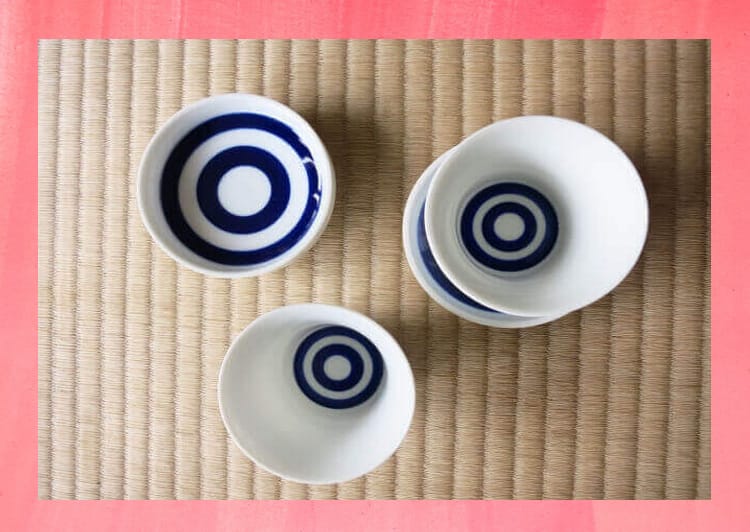
The oldest sake lees that exist in Japan are large pottery made in the mid-Jomon period
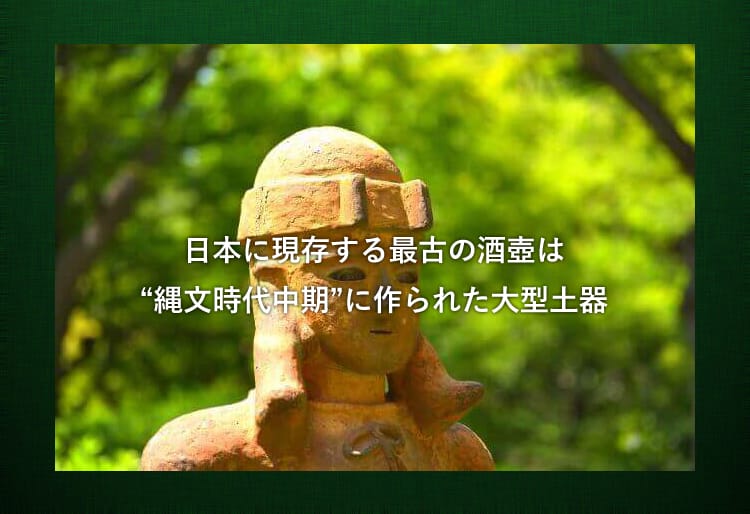
Sake cups are indispensable when drinking alcohol.
In Japan, alcohol was already drunk in the middle of the Jomon period (around BC 4000 to 3000)It is said that.
The proof of this is that of a large sake pot that can be as high as 51cm."Human half-boiled porcelain pottery"(Hanjin Han Amon Yukou Fuchitsuki-doki).
It was discovered at the Fujinai site at the foot of Yatsugatake in Nagano Prefecture and has been designated as an important cultural property of the country.
Since the birth of liquor, our ancestors have enjoyed liquor in a variety of liquor, using wisdom and ingenuity.Long ago, animal bones and shells were also used.It seems.
As an aside, Speaking of bones, Oda Nobunaga is famous for drinking alcohol instead of the cup of the enemy Masanaga Asai's skull that he defeated.
Although it is not certain as true, it is an episode that has even a nickname of "Sixth Ten Demon King" that Nobunaga can think of even if it is actually done.
By the way, Nobunaga, unlike the general public, was a sweet lover who loved konpeito. It's unexpectedly cute (laughs)
Today, there are a wide variety of materials, from natural materials such as wood, to ceramics, glass, and metal..
Depending on what you choose, the depth of the liquor can change the taste of liquor, create a sense of the seasons, and enhance the atmosphere and mood of the place.
Knowing about sake brewers will make your liquor life even more enjoyable.
There are so many materials for sake bottles
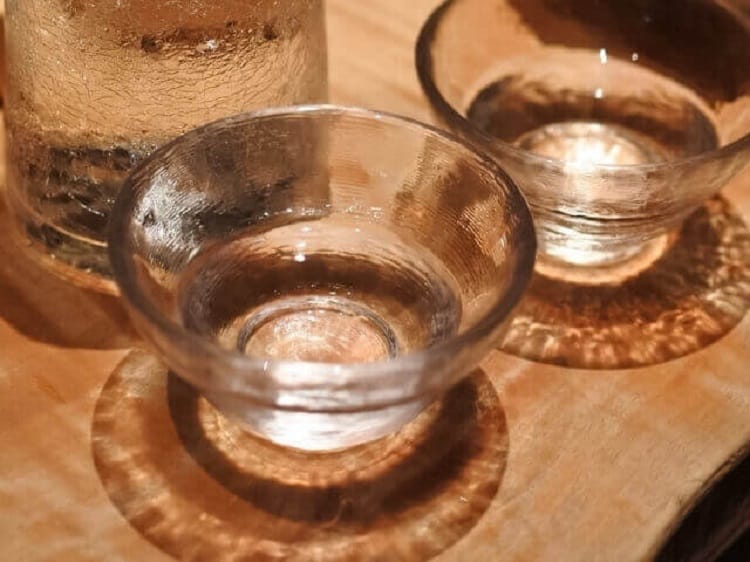
~ Ceramics ~
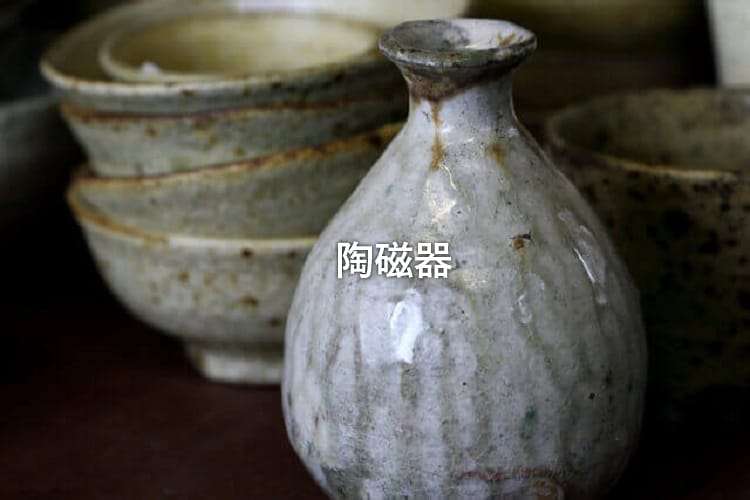
Speaking of sake utensils used for sake, most people think of ceramics.
It seems that it is not known unexpectedly,In fact, porcelain is a general term for “ceramics” and “porcelain”.
“Pottery” and “Porcelain” use different raw materials and baking methods, which makes their properties different.
(1) Pottery
The main ingredient of pottery is clay. For this reason, it is also called "earth".
A method called “oxidation firing” is used, where the air is burned with a bluish flame and the firing temperature is about 800 ℃ to 1250 ℃.
The charm of pottery that has been loved by people for a long timeFeel the simple texture and warmth.
Many light colors and soft textures make you feel relaxed.
A typical one is one of the “Medieval six old kilns”, which is one of the most popular 6 kilns that have been produced from the Middle Ages to the present day in Japan.“Bizen-yaki” in Okayama Prefecture, “Mashiko-yaki” (Mashikoyaki) in Tochigi Prefecture, “Shimizu-yaki” (Kiyomizuyaki) in Kyoto Prefectureetc.
After that, like Bizen ware, it is named after the medieval six old kiln,Shigaraki Yaki in Shiga PrefectureDo not forget.
It is a pottery that is known for its raccoon figurines with a chubby figure full of caress.
The place where the raccoon dog has a virtue is very familiar as a mercenary. If you can have a banquet together, you will have a delusion (laughs).
Overseas, “Delft ware” made in the Delft of the Netherlands from around the 16 century is a pottery.
Some pottery use glaze (also known as glaze) to prevent water penetration and smooth the surface, while others do not.
By the way,The type of pottery with a rough surface gives vibration to the sake and opens the taste.There seems to be.
(2) Porcelain
The main raw material of porcelain is stone powder obtained by crushing ceramic stone. Therefore, it is also called “Stone”.
The baking method used is the opposite of the “oxidation baking” introduced earlier."Reduction firing" that burns with a red-black flame with less airThat technique.
It is baked at a temperature around 1200 ℃ ~ 1400 ℃, which is higher than pottery..
Porcelain isIts clear pure white color, smoothness like glass, hard texture, cool and cool impression, and glossinessThere are plenty of different attractions.
Many of them have been designed with brilliant colors and gorgeous patterns, and the art of craftsmen with high picture quality is being demonstrated.
A type that enjoys the beauty of the base color itself without any painting is also popular.
White porcelain is baked with a transparent glaze on a white substrate (Hakujiki), and a bluish light blue finish due to the small amount of iron contained in the substrate or glaze is "Blue and white porcelain" Called Hakujiki).
Speaking of typical porcelain in Japan,“Kutani Yaki” in Ishikawa PrefectureAnd“Arita ware” in Saga Prefecture (Aritayaki)And so on.
Arita ware was also called “Imari ware” because it was shipped from Imari Port when exported overseas.
The ones made during the Edo period are especially called “Komariyaki” and continue to attract many people as valuable antiques.
Koimari ware was used habitually as an “interior” to decorate the palace, centered on European royal aristocrats.
In particular, it was the German Augusto Strong (1670 to 1733) that was committed to Koimari ware.
He was so enthusiastic that there were still episodes in which he handed out hundreds of his soldiers to hand over the collection of Koimari Yaki.
Speaking of typical porcelain in the West, Italian “Richard Ginori” and French “Limoges”.
Among them, the German “Meissen” is considered the highest peak in European porcelain.
In fact, it was the Augusto king who mentioned earlier that Meissen was born.
In order to make beautiful porcelain like Koimari ware somehow in his home country, he confined the alchemist to the castle and forced his research.
Through trial and error, it was finally possible to elucidate the production method of porcelain, and that was the beginning of Meissen's history.
This is a good example (?) Of how powerful power is horrible, but useful for the development of culture and art.
by the way,Porcelain is called "China" in English. Its origin is China. In the days of the great voyage, China was one of the biggest producers of porcelain.
Chinese porcelain has been exported to overseas and has gained tremendous popularity due to its high quality.
For that reason, “China is the most famous place for porcelain”, and it seems that the name of China has come to mean “porcelain”.
By the way, the country name is written as “China” and the first letter is capital letters, but in the case of porcelain, there is a difference that it is written as “china” in small letters.
~ Glass ~

The charm of glass makes you feel refreshed.
In addition to sake, sake bottles are made for various liquors, such as beer mugs, wine glasses, and cocktail glasses.
Because of its cool impression, glass liquor is particularly useful when drinking cold sake in the hot summer.
The most seasonal materialI think.
Among the many glass liquors, the one that has been particularly popular is the one with Kiriko work. The most famous is"Edo Kiriko"It will be.
Born in 1834 in the wake of Bidroya Kagaya Kyubey carving on the surface of the glass with KongoshaIt is reported.
Edo Kiriko, which uses diamond wheels and other patterns on colorless and transparent glass, is characterized by a deep cut and a clear and gorgeous finish.
In addition, "Satsuma Kiriko" in KagoshimaThere are many people who know.
Satsuma Kiriko was the glasswork that Satsuma produced at the end of the Edo period as part of the Shuseikan business (Western industrial business).
It is a craft that is said to have been brought to the Tokugawa Shogunate by Atsuhime, who was brilliant in quality using the most advanced technology of the time and featured in the Taiga drama.
However, soon after the lord's rush and the British-English War, it declined rapidly. Later, in 1985 (Showa 60), the reprint of Satsuma Kiriko began again using modern technology and continues to the present day.
The beauty of gradation called `` blur '' created by applying colored glass to transparent glass and cutting it is attractive.
It has a simple taste"Japanese glass"Well, perfect for sake bottles.
The glass isn't completely transparent, and bubbles are intentionally mixed in or the shape is slightly distorted.
~ Thu ~
The goodness of wooden materials makes you feel the warmth of the old days. There are various variations such as those using cedar, cypress and bamboo.
The texture is soft and lightThat is the feature of wooden sake bottles. There are things that you can feel the scent of wood, and it's nice to be able to enjoy a moment of healing.
Japanese sake with a natural fragrance of wood has a lot of taste.
Bamboo liquors are often served when you go to some high-end shops.
Especially in the summer,The charm is that it looks cool and wraps in a refreshing feeling..
Bamboo has an image that seems to be difficult to clean, but that is not the case.
It is important to lightly wash it, drain it and put it in the freezer.
In addition, “lacquerware” (Shikki), which is made of lacquered wood, is filled with the beauty of Japan and creates a refined luxury.
In the old days, lacquer jars were used by a limited number of people, including aristocrats. In modern times, it is often used for celebrations such as New Years and weddings.
Typical examples are “flower painting” (Hanauri) and “golden bite painting” (Kimumushi Nuri) techniques.Aizu lacquerware in FukushimaAnd rustic and warm known as "Negoro Nuri"Kishu lacquerware in Wakayama.
In addition, decorations such as “Roiro”, “Makie”, “Shinkin” (Chinkin), etc. are applied to make it elegant and robust.Wajima Lacquerware in Ishikawa PrefectureBoasts high popularity for a long time.
by the way,Lacquerware is "Japan" in EnglishDo you know that is called?
Japan has long been a famous place for lacquerware. For that reason, the name of Japan has come to mean “lacquerware” because “Japan is a lacquerware”.
By the way, like “china” representing porcelain, it starts with “japan” instead of “Japan”.
~ Metal ~
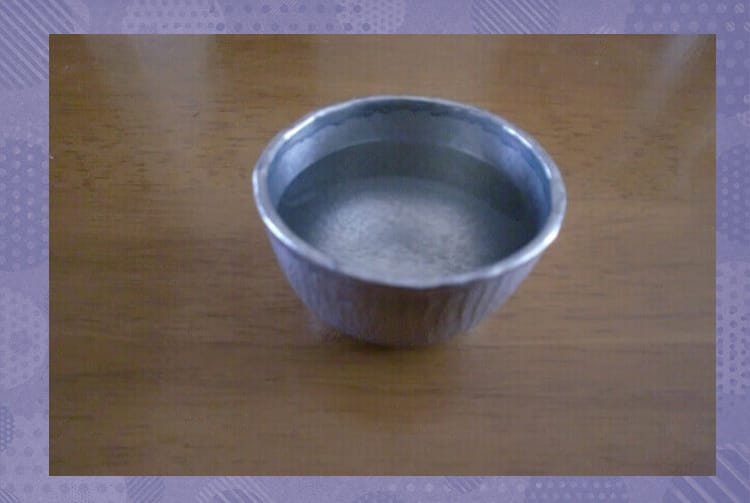
A variety of metal materials such as tin, titanium, stainless steel, sterling silver, and copper are used in sake brewers.
One of the biggest properties of metal isHigh thermal conductivity.
It keeps the temperature of the poured liquor firmly, so you can enjoy it at your favorite temperature until the end.This is a real attraction for drinking.
I especially love Japanese sake lovers,Tin liquor. I and many of my Japanese sake buddies love the “Tinnokuchi”.
Some of them are bringing their “My Tin Oguchi” to the drinking party.
I'm scared of getting drunk and leaving it in the store, but I never take it out of my home (laughs).
TinExcellent thermal conductivity among metals. In addition, its high ionic effect has outstanding sterilizing power and also plays a role of keeping freshness.
It has long been said that "If water is put into a tin vessel, it will not rot."
In addition, it has been used in liquor and tea utensils because it has the effect of “eliminating miscellaneous taste of liquor and making the taste mellow and mild”.
Tin products that have been attracting a lot of attention recentlyCasting manufacturer “Nosaku” in Takaoka City, Toyama Prefecture.
Founded in 1916 (Taisho 5) year. Based on the idea of “making more powerful castings,” they are carefully made one by one by the hands of craftsmen, taking advantage of the traditions and techniques handed down to the area.
What made this “Nosaku” world famousBending basket made of tin 100% "KAGO" series.
Tin is too soft and is usually used as an alloy, such as mixed with copper.
However, using the softness, we succeeded in making the world's first tin 100% product.
Because it is so flexible that it does not seem like a metal, it can be freely deformed by pulling or bending.This is a huge hit product.
It's also pulled from overseas restaurants. Of course, the lineup of tin liquors is also substantial.
Some of them have gold leaf on the inside, and the golden sparkle enhances sake.
By the way, Nosaku actively conducts plant tours.
Takaoka City has become a sightseeing spot for the craftsman's work site as a precious opportunity to see up close rather than through the glass.
Speaking of metal liquor, what I remember is Tsubame City, Niigata Prefecture. It is a town that is famous not only in Japan but also overseas due to its high metal processing technology.
Metal liquor made in Sakai City is mainly made of stainless steel, titanium and copper. It has become popular year after year, and now has become one of the major industries in Sakai City.
Recently, to spread the custom of toasting with metal cups, such as metal cups and cups made in the city"Sakai City Metal Sake Cup Cheers Campaign"This is an effort.
In this area, a metal polishing specialist group called “Shinya Syndicate” was born in 2003.
It ’s just called “a polisher,” and it is the world's top class for polishing metal products. Apparently, Apple Inc. in the United States has been asked to polish mobile devices.
Metal liquor can be used for a long time because it will not break even if dropped.Also nice point.
Some people hesitate to purchase because many of them are expensive compared to other materials, but considering its outstanding durability, you should be able to get enough.
Acrylic
In recent years, acrylic liquor is becoming more popular, especially among women.
Light, hard to break, and more transparent than glassIs the feature.
Because it is colorless and transparent and has no fragrance, it does not interfere with the color and scent of sake itself.
My favorite isAcrylic bowl made by "mas / mas" (Setagaya-ku, Tokyo).
There are many variations on the surface, ranging from Japanese traditional patterns such as “Qinghai wave”, “Cloisonne”, “Sakura”, “Cherry”, etc. to modern designs. It is abundant.
Whereas traditional kiso has a thickness of around 10mm,The “mas / mas” acrylic bowl is as thin as 3mm so that it is easy to drink even in the mouth of women..
You don't have to worry about spilling your clothes, so you can enjoy sake.
